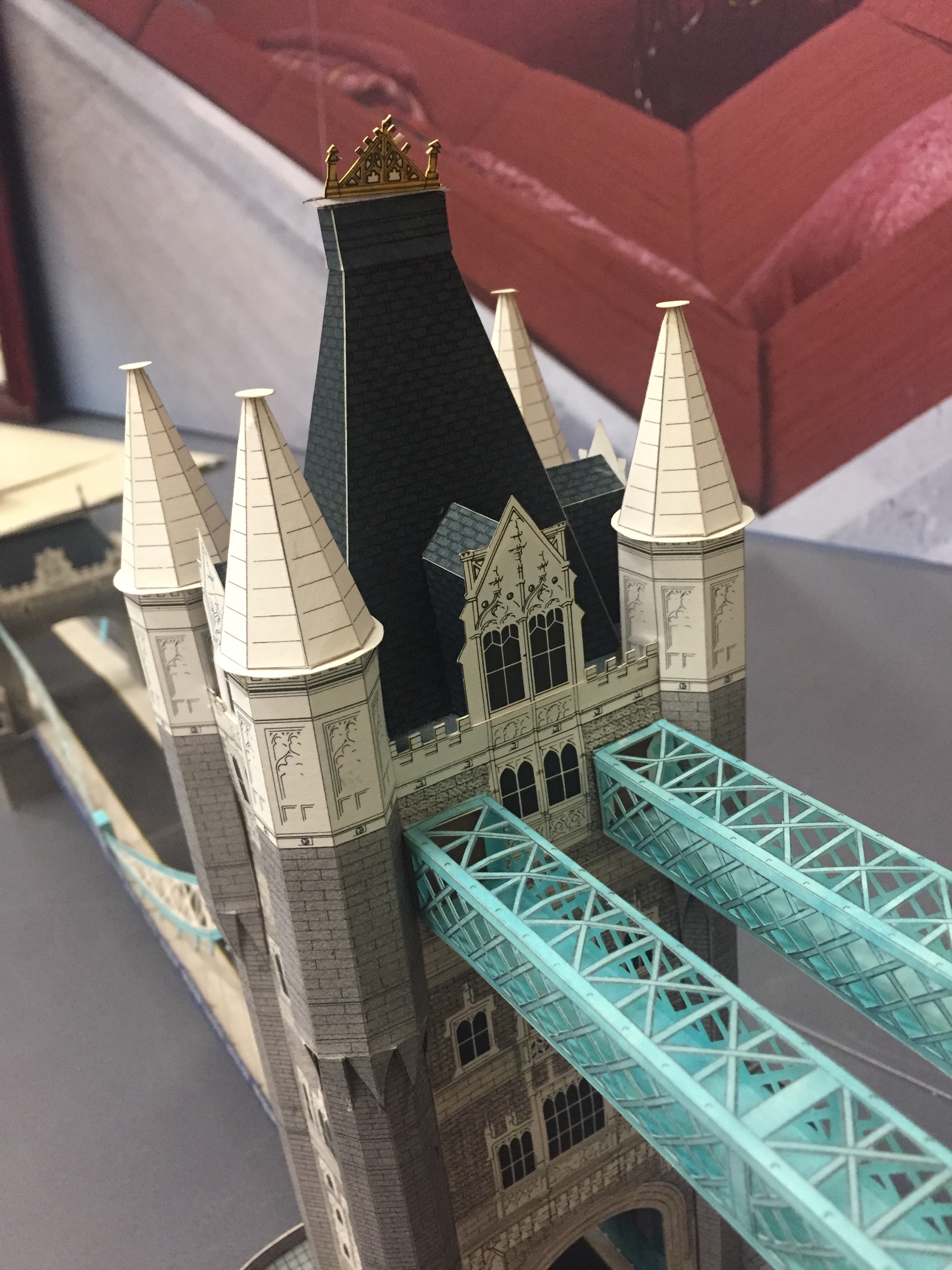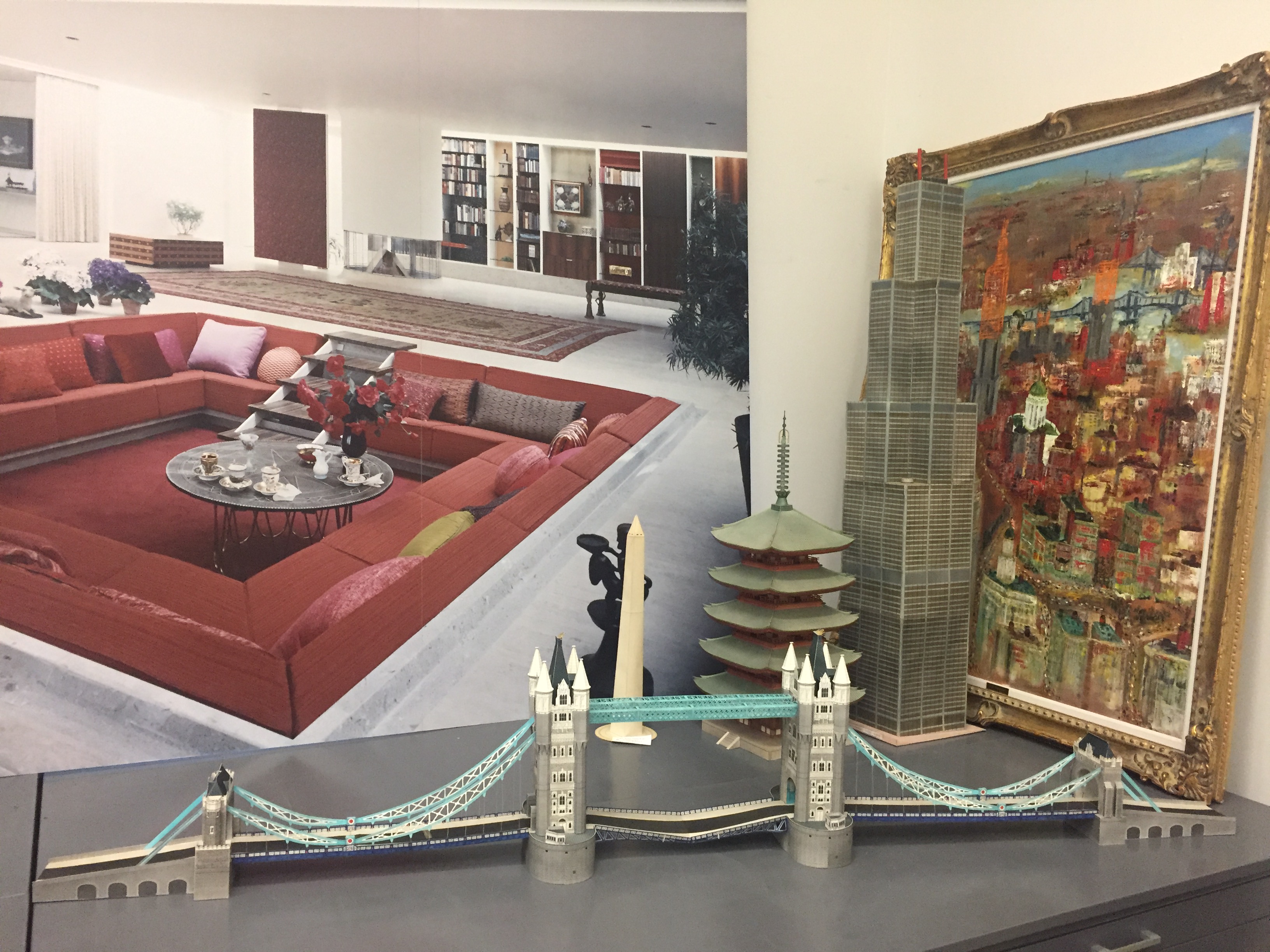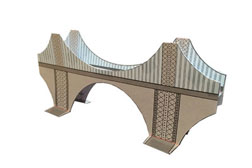 By Laura Hicken, assistant registrar
By Laura Hicken, assistant registrar
As November is Historic Bridge Awareness Month, we were reminded of one of our favorite artifacts in the Alan Rose Collection.
In 2014, paper model creator Alan Rose donated his personal archives of paper models, art boards, and assembled model prototypes to the Museum. Rose was an artist and graphic designer who found huge success in the 1980s and 90s designing paper model kits that went above and beyond anything available at the time. These included four-foot-tall Empire State Building model kits; an Eiffel Tower that really did tower over your work space; and iconic buildings such as the Taj Mahal and the Vatican.
Several factors made the Alan Rose Collection a compelling addition to the Museum’s permanent collection. We already had a collection of paper model kits and we were excited to be able to add to that collection. We were also showcasing our paper models in an exhibition and knew we would get increased interest from the public and researchers. But what was even more exciting was that the donation included Rose’s designs, art boards, and model prototypes—giving us not only the finished product, but valuable insight into the design and fabrication process of paper model kits.

We like to joke that our curse as a building museum is that we’ll never be able to collect the final product. We will never have the Empire State Building or the Brooklyn Bridge in our collection or on display in our galleries. But Rose’s collection provides us with the next best thing: a microhistory of how an iconic structure is viewed, broken down, and rebuilt as a new, smaller, paper construction process. Through his designs we are able to view these buildings and bridges in a whole new light and think about their construction in a completely unique way.

The completed paper model of London’s Tower Bridge, sitting at an impressive six feet long is often admired by those who visit our archives. The model is a prototype built by Alan Rose, and the twelve art boards we have in our collection chronicle the work that not only went into designing this model, but designing it in a way that it could be printed in book form and built by anyone who was interested. We know it sounds corny, but Alan Rose really did build bridges between some of the most famous structures in the world and the kids (and kids at heart) who admired them.

